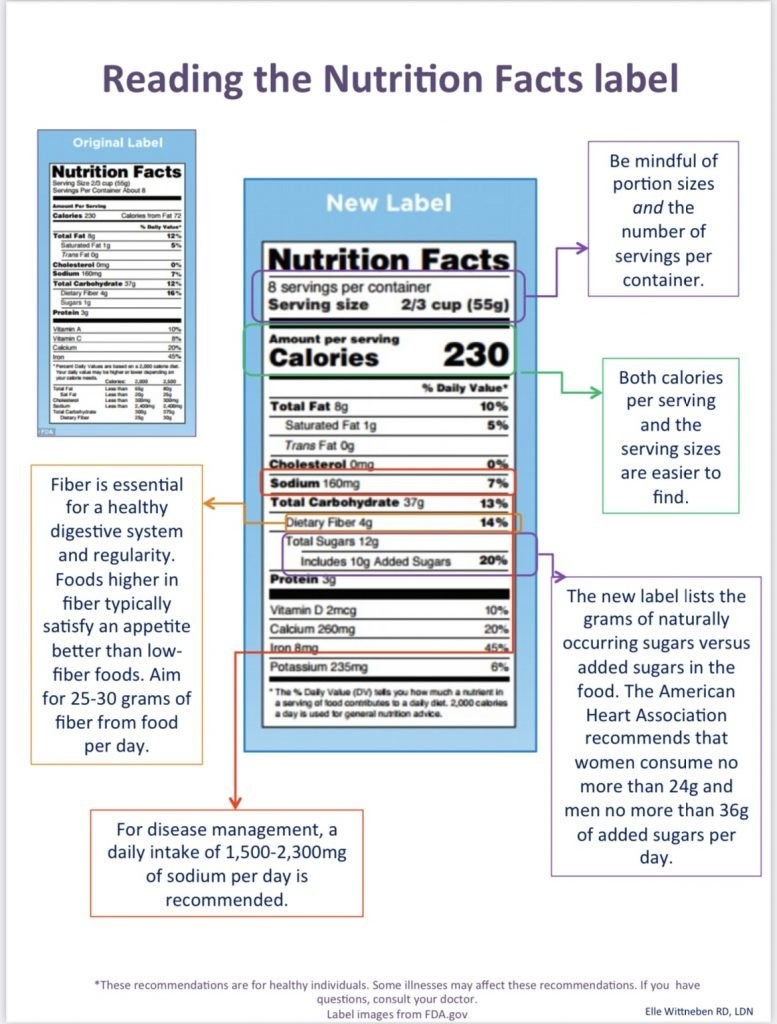March is National Nutrition Month, and in honor of that month, we invited registered dietitian, Elle Wittneben, to answer a common question that patients ask her: How to read the nutrition facts label.
As with all content on our blog, the following information is educational in nature, not medical advice. Always talk to your healthcare provider about your specific needs.
Tell us a little about the history of the nutrition facts label. How long has it been around?
ELLE: The regulation of public nutrition information is surprisingly relatively new! In 1990, the Nutrition Labeling and Education Act was signed into law. In 1993, the standardized nutrition facts label was presented. The label received its first makeover in 2016. And by July 2021, all packaged foods have been required to update to the new label.
What does the nutrition facts label include?
ELLE: The nutrition facts label lists macronutrients (carbohydrate, fat, and protein) and fiber content of foods, as well as some micronutrients (vitamins and minerals). Knowing how to interpret this information can be very beneficial for your health.
Perfect segue! Let's talk about the percentages we see for macronutrients and micronutrients.
ELLE: Those numbers with the percent symbols next to them represent the nutrient’s “daily value” (DV). The percentage stands for what percent of your daily need for a nutrient is met by one serving of the food. The DV should only be used as a guide, since the percentages are based on a 2,000 calorie diet, and not everyone has the same daily calorie needs.
The DV for micronutrients will provide a better estimate of the percentage of needs met compared to the DV for macronutrients. This is because the micronutrient needs are relatively similar for most vitamins and minerals across the adult lifespan for healthy individuals. The biggest exception is pregnancy.
What do you look for when reviewing the nutrition facts label?
ELLE: As a dietitian, when I look at the nutrition facts label, the first numbers I look for are the saturated fat, added sugar, and fiber content of the food. Diets high in saturated fat and added sugars can contribute to many diseases, including heart disease, diabetes, and cancer.
Fiber, however, can reduce the risk of heart disease and help aid in weight management since fiber is a satiety nutrient, meaning it will help you feel satisfied longer.
The fourth nutrient I pay attention to is protein since protein is another satiety nutrient. Choosing food that contains more than a few grams of protein and fiber can make for a satisfying snack.
Below, Elle provides a snapshot of the nutrition facts label and what to keep in mind as you read one.

